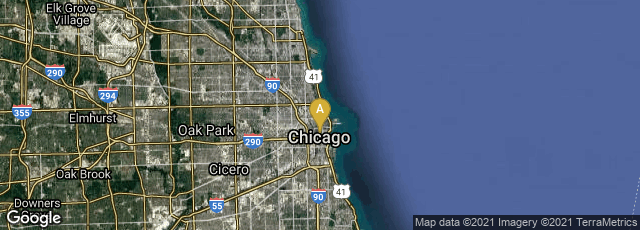

A: Chicago, Illinois, United States
In a Chicago television studio on September 26, 1960 Senator John F. Kennedy and Vice President Richard Nixon stood before an audience of 70 million Americans—two-thirds of the nation's adult population—in the first nationally televised Presidential debate. This first of four debates held before the end of October gave a vast national audience the opportunity to see and compare the two candidates, and ushered in a new age of Presidential politics. It also proved the influence of television on social and political events, and may be considered the beginning of television's dominance over print as a popular news medium.
The four Kennedy-Nixon television debates were a key turning point in the 1960 presidential campaign.
"Nixon insisted on campaigning until just a few hours before the first debate started. He had not completely recovered from his hospital stay and thus looked pale, sickly, underweight, and tired. He also refused makeup for the first debate, and as a result his beard stubble showed prominently on the era's black-and-white TV screens. Nixon's poor appearance on television in the first debate is reflected by the fact that his mother called him immediately following the debate to ask if he was sick. Kennedy, by contrast, rested and prepared extensively beforehand, appearing tanned, confident, and relaxed during the debate. An estimated 70 million viewers watched the first debate. It is often claimed that people who watched the debate on television overwhelmingly believed Kennedy had won, while radio listeners (a smaller audience) believed Nixon had won. A study has found that the alleged viewer/listener disagreement is unsupported. . . .
"After the first debate, polls showed Kennedy moving from a slight deficit into a slight lead over Nixon. For the remaining three debates Nixon regained his lost weight, wore television makeup, and appeared more forceful than in his initial appearance.
"However, up to 20 million fewer viewers watched the three remaining debates than the first one. Political observers at the time believed that Kennedy won the first debate, Nixon won the second and third debates, and that the fourth debate, which was seen as the strongest performance by both men, was a draw.
"The third debate is notable because it brought about a change in the debate process. This debate was a monumental step for television. For the first time ever split screen technology was used to bring two people from opposite sides of the country together so they were able to converse in real time. Nixon was in Los Angeles while Kennedy was in New York. The men appear to be in the same room, thanks to identical sets. Both candidates had monitors in their respective studios containing the feed from the opposite studio so they could respond to questions. Bill Shadel moderated the debate from a third television studio in Chicago. The main topic of this debate was Quemoy and Matsu. It was a question of the US position over whether military force should be used to prevent buffer islands between China and Taiwan from falling under Chinese control" (Wikipedia article on United States presidential election, 1960, accessed 05-30-2014).